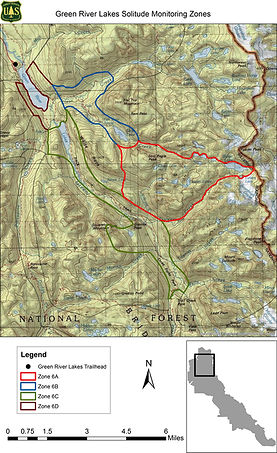

Solitude Monitoring
OVERVIEW
Opportunities for solitude is one of four defining wilderness characteristics identified in the 1964 Wilderness Act. Federal managers have established a solitude monitoring protocol in the Teton, Gros Ventre, Bridger, and Jedediah Smith Wilderness areas. This protocol gathers travel encounter data essential for creating a baseline to assess visitor trends and guide managemen. The Solitude Monitoring program, a partnership between the Wyoming Wilderness Association, federal agencies, and community members, trains local volunteers on this citizen science project. These volunteers collect data adhering to the Forest Service’s National Minimum Protocol for Monitoring Opportunities for Solitude. This effort not only ensures consistent, high-quality data but also cultivates a stewardship ethos among community members. To learn how you can contribute to this vital initiative, please see the resources below.

Virtual Training Video
Disclaimer: Please note that by signing-up for this community science project, volunteers assume all risks and liability associated with monitoring in remote Wilderness areas.
2025 Field Tracker
Ready to get started?
Check the Field Tracker to see the data collections that we need your help tracking down, then select the Forest and date and enjoy the trail!






